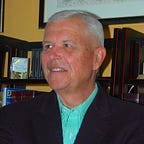Art, Design & Entrepreneurship
Last week I gave a talk to a group of students at Savannah College of Art and Design (SCAD) on the Hult Prize, the worldwide intercollegiate competition in social entrepreneurship. The students were organizing their first teams at SCAD to compete and wanted help integrating their art and design training into effective, scalable entrepreneurship.
Where would you go to find a framework that integrates art, design and entrepreneurship? In a pinch, you might talk about using design thinking, but it does not address art. And, without combining design thinking and systems thinking, many now think standalone design thinking is outdated. I then considered whether the abstract/tangible framework might be helpful given the relationship between art and science. As I struggled with this framework, I realized that Neri Oxman’s Krebs Creativity Cycle (KCC) might be an excellent framework to use with the students. Developed at the MIT Media Lab where Oxman was a professor, the diagram below is a simple illustration of KCC.[I]
Oxman presents KCC beginning with Science, but I have always preferred to start with Art. Schopenhauer’s quote, “Art makes the emotions tangible” was for me one of the most magnificent pieces of learning in my life and it opened up the abstract/tangible framework for many applications.
· Art takes perception and turns it into tangible data and information (music, drawing, writing, painting…)
· Science takes information and converts it to knowledge (of reality)
· Engineering gives science its purpose (the prototype)
· Design takes engineering and creates the utility that changes behavior.
· The change in behavior changes perception which allows Art to start over again
Oxman sees the utility created in Engineering and the behavior change created in Design, but I think utility and change in behavior are always linked. Design creates the customer value, the utility, as demonstrated or documented by a change in the user behavior. Both design and entrepreneurship are not successful unless they provide value (utility) that fosters a sustainable change in customer behavior.
If we take design and expand it to design thinking, we achieve the human-centric approach critical to entrepreneurship and understanding the customer problem. I then introduced systems thinking to the SCAD students to complement design thinking and provide the holistic approach required to better deal with the complexity of the current networked world and the multitude of connected stakeholders.
At this point, I said I had shown how design advances to design thinking and systems thinking and satisfies the elementary requirement in entrepreneurship to define problem-solution-market. All a bit theoretical, although I prefer the word foundational. I then tried to show the students how to solve a problem using entrepreneurship.
· Art provides the storytellers and visualizations that make the entrepreneurship (information) tangible and understandable, the basic craft of the artist.
· Science identifies the transformative knowledge required to hypothesize a problem to be solved through entrepreneurship.
· Engineering develops the prototype solution to the problem for the entrepreneurs to test in the market and continuously adapt.
· Design (thinking) is the humanistic input where we validate a problem and craft the human-centric solution(s) to test and change customer behavior.
With the framework defined as shown above, entrepreneurship begins with design (thinking).
In closing, I told the SCAD students that they should focus on their strengths in approaching the Hult competition. As trained artists, they are natural storytellers and blessed with the ability to visualize data and information. As trained designers, they naturally use a human-centric approach to problem-solving and iterate to improve their solutions. The students at SCAD are much better prepared than they think to enter an entrepreneurship competition!
Notes:
1 — A friend who is a designer told me it is very hard to describe her value, for example, in a job interview. She thought talking in terms of translating from the abstract to tangible might be a useful concept and visualization of information might be an example.
2 — In finalizing this article I remembered a talk, “Art, Entrepreneurship and Opportunity”, that I gave at the 107th CAA Annual Conference, in February 2019. The College Art Association (CAA) is a leading association to support art and design. That talk also used KCC to explain art and design. I also talked about the emerging influence of artificial intelligence on art. I think KCC is an excellent means to explain the relationship between art and artificial intelligence. Both tools create information in a tangible form which can then be processed into knowledge in science, engineering and design.
Thanks to SCAD for inviting me.
[i] “Krebs Cycle of Creativity” by Neri Oxman. Source: https://jods.mitpress.mit.edu/pub/ageofentanglement/release/1
